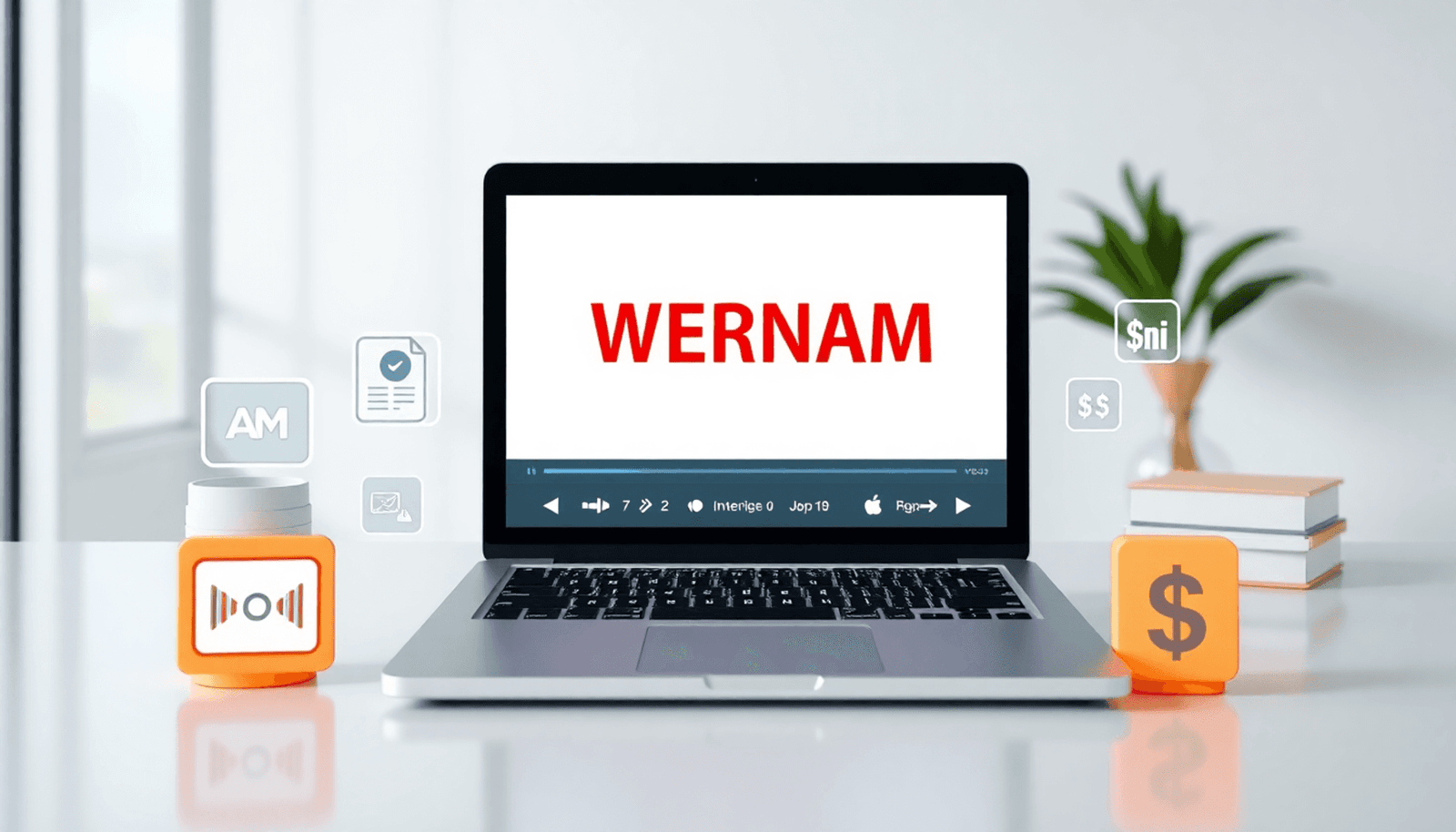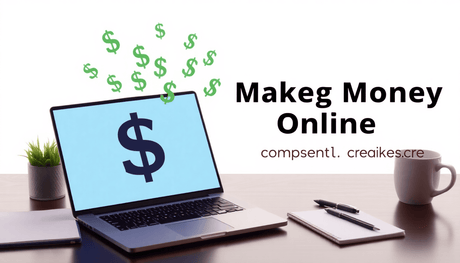Monetizing webinars with ready-made educational content is a powerful strategy that leverages pre-existing learning materials to create engaging and scalable revenue streams. Instead of building courses from scratch, you can tap into professionally designed content—such as PLR (Private Label Rights) video courses—that can be customized and branded to fit your audience.
This approach not only saves time and resources while maintaining high-quality education delivery, but also allows you to combine these ready-made resources with live or recorded webinar sessions to enhance value and interaction. For instance, you might consider incorporating some of the video courses offered by Joseph Delgadillo or exploring the educational content provided by Maiza Nara, both of which are excellent examples of ready-made educational resources.
The result is a flexible business model that appeals to entrepreneurs, educators, and content creators looking for efficient ways to generate income. Whether you're interested in selling high-quality PLR courses like those from Bilal Khan, or offering niche hobby courses that cater to specific interests, the possibilities are vast.
Key takeaway: Using ready-made educational content in your webinars opens doors to scalable monetization opportunities without sacrificing the engagement and personalization your audience expects.
1. Educational Content Types for Webinars
Webinars succeed when they address diverse learning preferences. People absorb information differently — some prefer watching, others doing, or following step-by-step instructions. Including a range of educational content types enhances engagement and retention during your sessions.
Why diversity matters:
- Addresses visual, auditory, and kinesthetic learners, as outlined in this learning styles guide
- Keeps the audience engaged by breaking monotony
- Increases perceived value through varied delivery methods
You can use pre-existing content and customize it to fit your webinar’s theme or audience needs. Tailoring content makes it feel more personalized and relevant, which boosts attendee satisfaction and willingness to pay.
Types of Educational Content That Work Well in Webinars
1. Video Courses
Ready-made video lessons provide structured learning and allow you to offer high-quality production without creating everything from scratch. You can embed these videos directly into your webinar or use them as supplementary material. For instance, platforms like Uthena offer a variety of PLR video courses that can be easily customized for your audience.
2. Tutorials
Step-by-step guides or demonstrations work great for hands-on learning. Showing practical applications during webinars encourages interaction and lets attendees follow along easily.
3. Templates
Providing downloadable templates—whether for business plans, marketing strategies, or design assets—gives participants tools they can immediately apply after the webinar ends.
4. Tools
Introducing specific resources like calculators, checklists, or software add-ons adds tangible value. Live demonstrations of these tools help attendees understand their benefits clearly.
5. Software Applications
If your webinar involves teaching software skills, integrating ready-made modules or walkthroughs can speed up the learning curve. Demonstrating real-time usage in a live environment creates an immersive experience. Experts like Rahul Agarwal, a seasoned Flutter developer and trainer, demonstrate how effective such methods can be in teaching complex software skills.
Customizing these materials is simple with white-label courses or PLR (Private Label Rights) content available from providers like Uthena. You get professional-grade resources that you can brand and modify to fit your unique style and audience requirements.
Adding variety through these different content types keeps your webinars dynamic and appealing. It also increases the chances that attendees will stay engaged throughout the session—and come back for more. For example, incorporating practical finance courses from Uthena's finance collection could provide valuable insights that attendees can apply immediately.
By leveraging these diverse educational content types, you not only cater to various learning styles but also enhance the overall effectiveness of your webinars, making them a more rewarding experience for all participants.
2. Revenue Models for Monetizing Webinars
Monetizing webinars involves choosing the right revenue model to match your content and audience. Several approaches stand out for their effectiveness and flexibility.
1. Paid Webinars
Charging attendees a one-time fee to access live or recorded sessions is straightforward. You set a price based on the perceived value of your content and the exclusivity of the experience. This model works well when your webinar offers specialized knowledge or certifications. Pricing considerations should include competitor rates, audience budget, and content depth. A clear value proposition—such as expert insights or actionable outcomes—increases willingness to pay.
2. Subscription Models
Offering ongoing access to a library of recorded webinars through monthly or annual subscriptions encourages consistent revenue. This model suits creators with a steady stream of quality content. Subscribers benefit from continuous learning opportunities and updates. You can tier subscriptions by access level, adding premium features like exclusive Q&A sessions or downloadable resources.
3. Microtransactions
Allowing users to purchase individual webinar recordings or specific modules enables flexible spending. This approach lowers entry barriers for new customers who prefer trying before committing fully. Microtransactions can be combined with upselling strategies, such as offering bundled courses or bonus materials at a discounted rate.
For instance, platforms like Uthena offer PLR video courses that you can buy and sell on your website, allowing you to keep all of your earnings for life! They also provide PLR bundles which give access to multiple courses from the same instructor at incredible prices.
4. Sponsored Content
Partnering with brands to feature sponsored segments during your webinar can generate income without charging attendees directly. This requires careful alignment between sponsor products and your audience interests to maintain trust and engagement.
5. Affiliate Marketing
Recommending third-party products or services relevant to your webinar topic offers commission-based earnings. Integrate affiliate links naturally within your presentation or follow-up materials, ensuring transparency about affiliations.
Each revenue model presents distinct advantages and challenges. You might find combining several approaches—such as paid live webinars supplemented by subscription access to recordings—maximizes both reach and income potential. Experimentation helps identify what resonates best with your audience while maintaining sustainable growth.
3. Utilizing Platforms for Webinar Monetization
When it comes to monetizing webinars with ready-made educational content, the choice of platforms can significantly impact the success of your strategy. Utilizing the right online platforms can streamline your efforts and enhance the overall user experience for both you as the creator and your audience.
Learning Management Systems (LMS)
LMS platforms like Moodle or Teachable provide a structured environment for hosting educational content, managing enrollments, and tracking learner progress.
- Features such as course customization options, integrated payment gateways, and analytics tools can help you create a seamless monetization process.
- For instance, exploring various newest online courses on Uthena can provide insights into how LMS can be effectively utilized.
- Additionally, understanding the nuances of online course creation can further enhance your strategy.
Membership Platforms
Membership platforms like MemberPress or Patreon enable you to offer exclusive content to paying members on a subscription basis.
- Benefits may include recurring revenue streams, community engagement tools, and tiered membership options for different content access levels.
Online Course Marketplaces
Platforms like Udemy or Coursera offer a marketplace for selling courses to a wide audience.
- Leveraging these marketplaces can increase your reach, provide built-in marketing opportunities, and offer credibility through association with established brands.
- For example, Jerry Banfield's transformative courses on addiction, relationships, and entrepreneurship available on Uthena serve as an excellent case study of successful course monetization.
By leveraging the features and capabilities of these platforms, webinar creators can effectively monetize their educational content while providing value to their audience in a user-friendly manner.
4. Enhancing Engagement & Retention in Webinars
Interactive elements are essential to keep participants actively involved throughout your webinar. Passive listening often leads to reduced focus and lower retention rates. Including moments where attendees participate transforms the experience from a one-way presentation into a dynamic learning session.
Key strategies to boost engagement:
- Q&A Sessions: Allowing time for questions encourages attendees to clarify doubts and feel heard. This interaction makes the content more relevant and increases satisfaction.
- Polls: Quick polls provide instant feedback on participant opinions or knowledge levels. Polls break up the flow, making sessions more lively while giving you insights about your audience.
- Breakout Rooms for Discussions: Smaller group discussions foster peer-to-peer learning and create opportunities for networking. Breakout rooms can be used for case studies, brainstorming, or sharing experiences related to the webinar topic.
- Hands-on Exercises: Practical exercises help translate theory into action. They reinforce learning by allowing participants to apply concepts immediately within the session.
Tailoring these interactive components to your audience ensures higher engagement and better retention of educational content. Using tools integrated into popular webinar platforms makes adding these features seamless and efficient. These elements not only enhance the learner experience but also increase perceived value, which can positively impact monetization success.
Incorporating AI courses or design courses from Uthena into your webinar can provide valuable resources for your audience. Additionally, offering video courses with master resell rights can further enhance the value of your webinars, providing attendees with quality content that they can use beyond the session.
5. Effective Pricing Strategies for Webinar Monetization
Setting the right price for your webinar is critical to attracting attendees and maximizing revenue. Pricing strategies vary depending on your audience, content quality, and delivery format. When working with ready-made educational content, consider these approaches:
1. Perceived Value Pricing
Attendees pay based on how valuable they believe the content is. Enhance perceived value by highlighting unique benefits such as expert insights, exclusive templates, or actionable tools included in your webinar package.
2. Tiered Pricing
Offer multiple access levels to cater to different budgets and needs. For example:
- Basic access: live webinar attendance only.
- Standard access: includes live attendance plus recorded sessions.
- Premium access: adds downloadable resources, Q&A sessions, or one-on-one coaching.
This method allows you to capture a wider audience while increasing average revenue per attendee.
Price points should reflect not just the content but also the experience surrounding it—interactive features, personalized support, and ease of access play significant roles in what attendees are willing to pay. Testing different pricing tiers can reveal optimal rates that balance affordability with profitability.
Consider bundling ready-made courses or templates with your webinars as value-added extras. Customers often perceive combined offers as more worthwhile, justifying higher prices without deterring sign-ups.
6. Automation & Sales Systems in Webinar Monetization
Streamlining Sales Processes
Utilizing [sales automation tools](https://uthena.com/collections/arbaz-khan) can significantly streamline the sales processes associated with webinar monetization efforts. These tools automate tasks such as lead nurturing, email marketing, and CRM management, allowing webinar creators to focus on delivering valuable content rather than manual administrative tasks.
Benefits of Automated Webinars
Automated webinars offer a range of benefits as a marketing strategy to drive conversions. They provide flexibility for attendees to access sessions at their convenience, enable scalability by reaching a larger audience without time constraints, and allow for repeated presentations without additional effort. This approach can increase engagement and lead generation by capturing leads round the clock, ultimately boosting revenue potential for monetized webinars.
By incorporating sales automation tools and automated webinars into your webinar monetization strategy, you can enhance efficiency, reach a broader audience, and maximize revenue opportunities effectively. Additionally, leveraging ready-made educational content can further streamline your process and provide high-quality resources for your audience.
7. Continuous Improvement through User Feedback in Webinar Monetization Strategies
Collecting user feedback is a critical step in refining your webinar offerings and boosting their monetization potential. Feedback reveals what works, what doesn’t, and which topics or formats resonate most with your audience. You gain direct insights from attendees that help tailor content and delivery to better meet expectations.
User feedback collection methods include:
- Post-webinar surveys: Short questionnaires sent immediately after the session capture fresh impressions. Use rating scales, multiple-choice questions, and open-ended responses for balanced data.
- Live polls during webinars: Instant interaction gauges understanding and satisfaction in real time, allowing quick adjustments if needed.
- Comment sections and chat transcripts: Reviewing participant questions and comments uncovers common concerns or interests worth addressing in future sessions.
- Follow-up emails with feedback requests: Personalized outreach encourages detailed responses beyond the quick survey answers.
Feedback analysis helps identify trends across multiple sessions, guiding improvements such as pacing adjustments, content depth changes, or enhanced interactivity features. It also informs decisions about which ready-made educational content to customize further or retire.
Listening to your audience shows you value their input, builds trust, and increases the likelihood they’ll pay for upcoming webinars. Making iterative changes based on real user data creates a cycle of continuous improvement that strengthens your webinar business model.
8. Market Research & Audience Tailoring Techniques for Successful Webinar Monetization
Before launching any monetized webinar initiative, it's crucial to conduct thorough market research. This research helps you understand your target audience's preferences, pain points, and learning habits, allowing you to create content that resonates deeply with them. As a result, you'll see higher engagement and conversion rates.
Key methods to explore audience needs include:
- Surveys: Directly ask potential attendees about their topics of interest, preferred content formats (video, slides, interactive tools), and price sensitivity. Surveys provide actionable insights that guide content customization.
- Focus Groups: Gathering a small group from your target demographic to discuss their expectations offers qualitative depth beyond survey data.
- Social Media Listening: Monitoring discussions in relevant online communities reveals trending questions and challenges your audience faces.
- Analytics Review: Analyzing data from existing webinars or educational platforms helps identify what content types achieve higher attendance and retention.
Aligning your webinar’s educational materials with these findings enhances relevance. For example, if surveys show a strong preference for hands-on tutorials over lectures, embedding ready-made video courses or templates tailored to those needs will boost satisfaction and perceived value. You can consider leveraging expert resources such as those offered by Alex Genadinik, known for his bestselling courses on entrepreneurship, SEO, and marketing.
Tailored content also supports diverse learning styles within your audience — some may prefer detailed walkthroughs while others benefit from quick-reference tools or software demos. Meeting these varied preferences raises the likelihood of repeat attendance and positive word-of-mouth referrals.
Monetization thrives when your webinar offerings feel personalized and precisely targeted, making market research not just an initial step but an ongoing strategy to refine and expand your revenue streams effectively.
Conclusion
Encourage readers to take action by implementing the strategies discussed throughout this article but also remind them that building a successful webinar business takes time and effort.
Keywords: Sustainable revenue stream, Community engagement, Monetizing Webinars with Ready-Made Educational Content.
Remember, sustainable revenue streams are built over time with consistent effort. Engage your community effectively and tailor your webinars to meet their needs. By combining pre-existing educational content with engaging webinar formats, you can create a valuable and scalable income source. Take the insights shared here and adapt them to your unique audience for maximum impact. Launching a successful webinar monetization strategy requires dedication and a deep understanding of your target market. Start small, iterate based on feedback, and watch your webinar business grow sustainably over time.
FAQs (Frequently Asked Questions)
What is monetizing webinars with ready-made educational content?
Monetizing webinars with ready-made educational content involves combining pre-existing educational materials such as video courses, tutorials, templates, and software applications with live or recorded webinar sessions to create an engaging and scalable revenue stream.
What types of educational content work best for webinar monetization?
Effective educational content types for webinars include video courses, tutorials, templates, tools, and software applications. Incorporating diverse formats caters to different learning preferences and enhances participant engagement during the sessions.
Which revenue models can be used to monetize webinars effectively?
Popular revenue models for webinar monetization include paid webinars, subscription models offering ongoing access to recorded sessions, microtransactions for specific content pieces, sponsored content collaborations, and affiliate marketing strategies. Each model has its pros and cons depending on the target audience and content type.
How can interactive elements enhance engagement and retention in webinars?
Incorporating interactive elements such as Q&A sessions, live discussions, polls, breakout rooms, and exercises boosts participant engagement by fostering active learning and interaction. These features help maintain attention throughout the session and improve information retention.
What pricing strategies are effective for monetizing webinars with ready-made content?
Effective pricing strategies include leveraging perceived value to set competitive price points and implementing tiered pricing options that offer varying levels of access or additional resources. These approaches help maximize revenue while meeting diverse customer needs.
How can automation tools support sales systems in webinar monetization?
Automation tools streamline sales processes by managing registrations, payments, reminders, and follow-ups efficiently. Automated webinars can serve as marketing assets that drive conversions even when live sessions are not available, enhancing overall monetization efforts.









